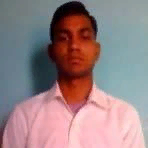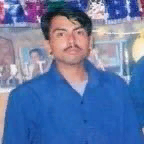International Journal of Image, Graphics and Signal Processing (IJIGSP)
IJIGSP Vol. 5, No. 11, 8 Sep. 2013
Cover page and Table of Contents: PDF (size: 484KB)
A Survey on PARATREE and SUSVD Decomposition Techniques and Their Use in Array Signal Processing
Full Text (PDF, 484KB), PP.35-45
Views: 0 Downloads: 0
Author(s)
Index Terms
MIMO, SVD, PARATREE, SUSVD, tensor decompositions, signal processing
Abstract
The present manuscript is intended to review few applications of tensor decomposition model in array signal processing. Tensor decomposition models like HOSVD, SVD and PARAFAC are useful in signal processing. In this paper we shall use higher order tensor decomposition in signal processing. Also, a novel orthogonal non-iterative tensor decomposition technique (SUSVD), which is scalable to arbitrary high dimensional tensor, has been applied in MIMO channel estimation. The SUSVD provides a tensor model with hierarchical tree structure between the factors in different dimensions. We shall use a new model known as PARATREE, which is related to PARAFAC tensor models. The PARAFAC and PARATREE both describe a tensor as a sum of rank-1 tensors, but PARATREE has several advantages over PARAFAC, when it is applied as a lower rank approximation technique. PARATREE is orthogonal, fast and reliable to compute, and the order of the decomposition can be adaptively adjusted. The low rank PARATREE approximation has been applied to measure noise suppression for tensor valued MIMO channel sounding measurements.
Cite This Paper
Vineet Bhatt, Sandeep Kumar,"A Survey on PARATREE and SUSVD Decomposition Techniques and Their Use in Array Signal Processing", IJIGSP, vol.5, no.11, pp.35-45, 2013. DOI: 10.5815/ijigsp.2013.11.04
Reference
[1]F. L. Hitchcock, “The expression of a tensor or a polyadic as a sum of products,” J. Math. Phys., Vol. 6, pp. 164-189,1927.
[2]F. L. Hitchcock, “Multiple invariants and generalized rank of a p-way matrix or tensor,” J. Math. Phys., Vol. 7, pp. 39-79, 1927.
[3]R. B. Cattell, “Parallel proportional profiles and other principles for determining the choice of factors by rotation,” Psychometrika, Vol. 9, pp. 267–283, 1944.
[4]L. R. Tucker, “Some mathematical notes on three-mode factor analysis,” Psychometrika, Vol. 31, pp. 279–311, 1966.
[5]P. Comon, “Tensor decompositions: State of the art and applications, in Mathematics in Signal Processing,” V, J. G. McWhirter and I. K. Proudler, eds., Oxford University Press, pp. 1–24, 2001.
[6]E. Acar, S. A. C¸ amtepe, M. S. Krishnamoorthy, and B. Yener, “Modeling and multi-way analysis of chatroom tensors,”in ISI (2005): Proceedings of the IEEE International Conferenceon Intelligence and Security Informatics, Lecture Notes in Comput. Sci. 3495, Springer, pp. 256–268, 2005.
[7]E. Acar, C. A. Bingol, H. Bingol, R. Bro, and B. Yener, “Multi-way analysis of epilepsy tensors,” Bioinformatics, Vol. 23, pp. 110–118, 2007.
[8]R. A. Harshman, “Foundations of the PARAFAC procedure: Models and conditions for an “explanatory” multi-modal factor analysis,” UCLA Working Papers in Phonetics, Vol. 16,pp. 1–84, 1970.
[9]A. L. F. de Almeida, G. Favier, J. C. M. Mota, and R. L. de Lacerda, “Estimation of frequency-selective block-fading MIMO channels using PARAFAC modeling and alternating least squares,” in The 40th Asilomar Conference on Signals, Systems and Computers, Pacific Grove, CA, pp. 1630–1634,Oct.–Nov. 2006.
[10]N. Sidiropoulos, R. Bro, and G. Giannakis, “Parallel factor analysis in sensor array processing,” IEEE Transactions on Signal Processing, vol. 48, no. 8, pp. 2377–2388, Aug. 2000.
[11]A. de Almeida, G. Favier, and J. Mota, “A constrained factor decomposition with application to MIMO antenna systems,” IEEE Transactions on Signal Processing, vol. 56, no. 6, pp. 2429–2442, Jun. 2008.
[12]L. De Lathauwer, B. De Moor, and J. Vandewalle, “A multilinear singular value decomposition,” SIAM J. Matrix Anal. Appl., vol. 21, no. 4, pp. 1253–1278, 2000.
[13]M. Haardt, F. Roemer, and G. Del Galdo, “Higher-order SVD-based subspace estimation to improve the parameter estimation accuracy in multidimensional harmonic retrieval problems,” IEEE Transactions on Signal Processing, vol. 56, no. 7, pp. 3198–3213, Jul. 2008.
[14]T. G. Kolda, “Multilinear operators for higher-order decompositions,” Sandia National Laboratories, Albuquerque, NM and Livermore, CA, Technical Report SAND2006-2081, 2006.
[15]L. De Lathauwer, B. De Moor, and J. Vandewalle, “On the best rank-1 and rank-(r1; r2; :::; rn) approximation of higher-order tensors,” SIAM Journal on Matrix Analysis and Applications, vol. 21, no. 4, pp. 1324–1342, 2000.
[16]T.G. Kolda, Brett W. Bader, “Tensor Decomposition and application,” Society of industrial and applied mathematics, SIAM review, Vol. 51, No. 3, pp. 455-500, 2009.
[17]R. Bro, R. A. Harshman, and N. D. Sidiropoulos, “Modeling multiway data with linearly dependent loadings,” Dept. of Dairy and Food Science, The Royal Veterinary and Agricultural University, Copenhagen, Denmark, Technical Report 2005-176, 2005.
[18]A. L. F. de Almeida, G. Favier, J. C. M. Mota, and R. L. de Lacerda, “Estimation of frequency-selective block-fading MIMO channels using PARAFAC modeling and alternating least squares,” in The 40th Asilomar Conference on Signals, Systems and Computers, Pacific Grove, CA, pp. 1630–1634, Oct.–Nov. 2006.
[19]L. De Lathauwer, “Decompositions of a higher-order tensor in block terms — Part II: Definitions and uniqueness,” SIAM J. Matrix Anal. Appl., Vol. 30, no. 3, pp. 1033–1066, 2008.
[20]A. Smilde, R. Bro, and P. Geladi, “Multiway Analysis with Applications in the Chemical Sciences,” Chichester, England: John Wiley and Sons, Ltd, 381 p, 2004.
[21]R. A. Harshman, “Foundations of the PARAFAC procedure: Models and conditions for an ‘explanatory’ multi-modal factor analysis,” UCLA working papers in phonetics, vol. 16,1970.
[22]G. Tomasi and R. Bro, “A comparison of algorithms for fitting the PARAFAC model,” Computational Statistics & Data Analysis, Vol. 50, no. 7, pp.1700–1734, Apr.2006.
[23]P. K. Hopke, P. Paatero, H. Jia, R. T. Ross, and R. A. Harshman, “Three-way (PARAFAC) factor analysis: examination and comparison of alternative computational methods as applied to ill-conditioned data,” Chemometrics and Intelligent Laboratory Systems, vol. 43, pp. 25–42, Sept. 1998.
[24]A. Richter, J. Salmi, and V. Koivunen, “ML estimation of covariance matrix for tensor valued signals in noise,” in IEEE International Conference on Acoustics, Speech, and Signal Processing (ICASSP 2008), Las Vegas, USA, pp. 2349–2352, Mar. 31–Apr. 4 2008.
[25]L. De Lathauwer, B. De Moor, and J. Vandewalle, “A multilinear singular value decomposition," SIAM J. Matrix Anal. Appl., vol. 21, no. 4,pp. 1253-1278, 2000.
[26]V. Degli-Esposti, D. Guiducci, A. deMarsi, P. Azzi, and F. Fuschini, “An advanced _eld prediction model including diffuse scattering,” IEEE Transactions on Antennas and Propagation, Vol. 52, no. 7, pp. 1717-1728, Jul. 2004.
[27]G. Del Galdo, “Geometry-based channel modeling for multi-user MIMO systems and applications,” Ph.D. dissertation, Ilmenau University of Technology, Ilmenau, Germany, ISBN: 978-3- 938843-27-7, 2007.
[28]Jussi Salmi, “Contributions to measurement-based dynamic MIMO channel modeling and propagation parameter estimation,” Helsinki University of Technology, Faculty of Electronics, Communications and Automation, Department of Signal Processing and Acoustics, ISBN 978-952-248-019-4 (PDF), ISSN 1797-4267, 2009.

